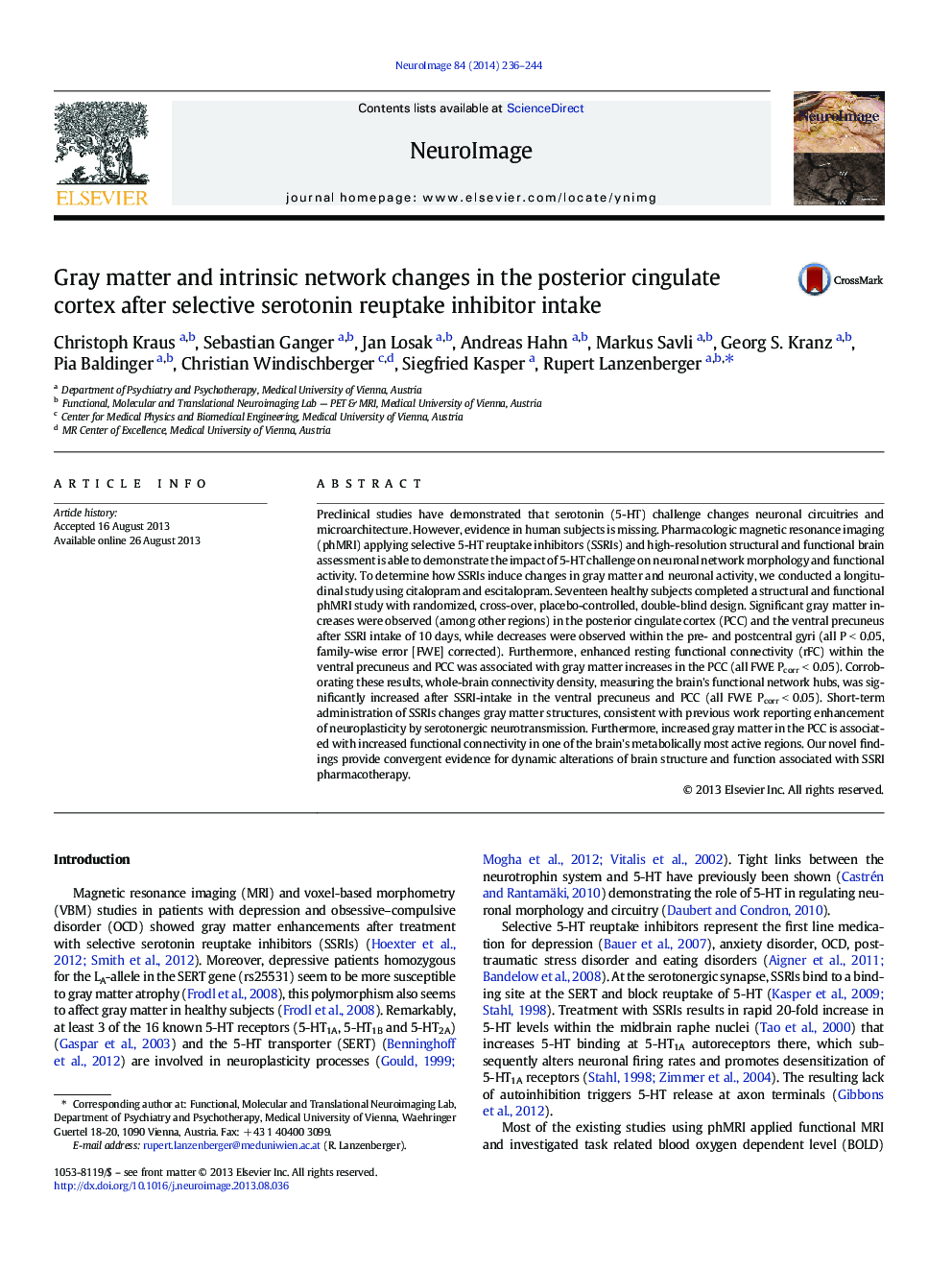| Article ID | Journal | Published Year | Pages | File Type |
|---|---|---|---|---|
| 6028430 | NeuroImage | 2014 | 9 Pages |
â¢Multimodal assessment using structural and functional pharmacological MRIâ¢Gray matter increases in posterior cingulate cortex after SSRI intakeâ¢Structural findings are associated with resting state network changes.â¢Pharmacological MRI reveals network restructuration effects of SSRIs.
Preclinical studies have demonstrated that serotonin (5-HT) challenge changes neuronal circuitries and microarchitecture. However, evidence in human subjects is missing. Pharmacologic magnetic resonance imaging (phMRI) applying selective 5-HT reuptake inhibitors (SSRIs) and high-resolution structural and functional brain assessment is able to demonstrate the impact of 5-HT challenge on neuronal network morphology and functional activity. To determine how SSRIs induce changes in gray matter and neuronal activity, we conducted a longitudinal study using citalopram and escitalopram. Seventeen healthy subjects completed a structural and functional phMRI study with randomized, cross-over, placebo-controlled, double-blind design. Significant gray matter increases were observed (among other regions) in the posterior cingulate cortex (PCC) and the ventral precuneus after SSRI intake of 10 days, while decreases were observed within the pre- and postcentral gyri (all P < 0.05, family-wise error [FWE] corrected). Furthermore, enhanced resting functional connectivity (rFC) within the ventral precuneus and PCC was associated with gray matter increases in the PCC (all FWE Pcorr < 0.05). Corroborating these results, whole-brain connectivity density, measuring the brain's functional network hubs, was significantly increased after SSRI-intake in the ventral precuneus and PCC (all FWE Pcorr < 0.05). Short-term administration of SSRIs changes gray matter structures, consistent with previous work reporting enhancement of neuroplasticity by serotonergic neurotransmission. Furthermore, increased gray matter in the PCC is associated with increased functional connectivity in one of the brain's metabolically most active regions. Our novel findings provide convergent evidence for dynamic alterations of brain structure and function associated with SSRI pharmacotherapy.
